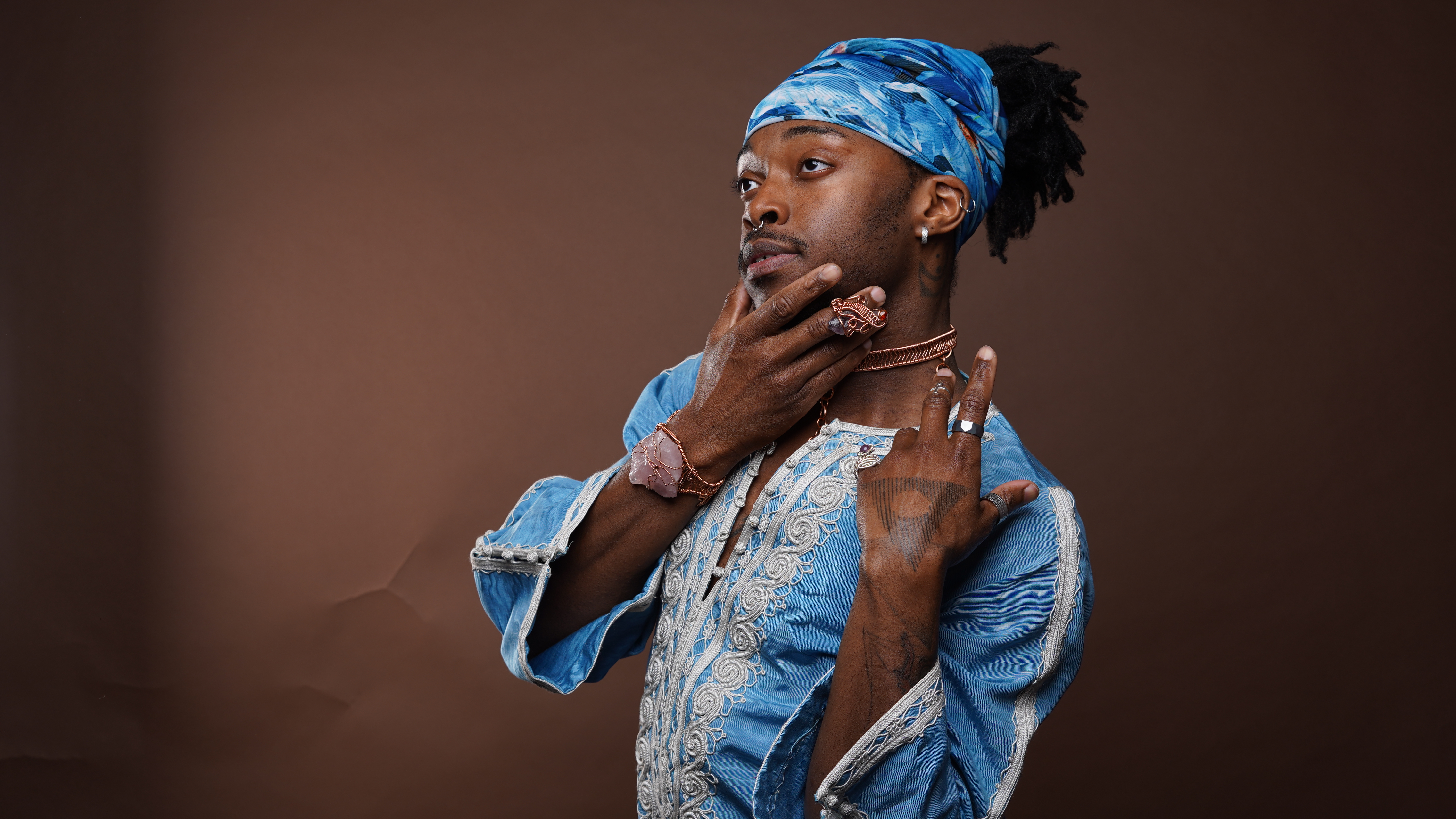CHICAGO — This post is part of a series of conversations with trans/genderqueer dancers to give you a broader idea of where we come from, what we’re up to, and how we navigate the dance community. With that said, meet A. Raheim White!
Raheim began dancing when they were fourteen years old as an alternative to gym class and it has since taken them across the country and around the world to study and perform. While studying dance at the University of Illinois at Urbana-Champaign, Raheim studied abroad in Taiwan to train in classical Chinese dance, Kung Fu, acrobatics, modern and ballet. They also danced with a few companies in Chicago including The Willingham Project under Lisa Johnson Willingham. From there, Raheim earned a masters degree in dance performance and choreography at NYU’s Tisch School of the Performing Arts, which led them to dance in a whole bunch of companies including, but not limited to, Sean Curran, Trainor Dance, Germaul Barnes Viewsic Dance, Whitney Hunter[MEDIUM] and Project 44.
After moving back to Chicago, Raheim began dancing with Lucky Plush Productions. Shortly thereafter, they began the long process of coming out as gender fluid. Raheim said:
“When I moved back to Chicago I did a rites of passage process called the Sankofa Rites of Passage. Sankofa is a Ghanaian concept, it comes from Ghana from the Akan people, and it means to go back and fetch. …We do work on addressing past traumas and clearing blockages so that all of the energy that has been stored… or stuck in those places of trauma can be gathered to the current moment, and you can step more fully into your power now.”
After completing the Sankofa Rites of Passage and addressing their anger toward their father, Raheim decided that they wanted to wear a dress. “I don’t know how those two things came like that, but I think my anger and my resistance toward him wasn’t allowing me to be really embodying my feminine aspect.” Raheim “started small,” with booty shorts and a crop top, and then worked their way up to a dress. Raheim uses they/them pronouns, but “anything in love is okay.”
When I asked Raheim how their gender affects how they navigate the dance community, they answered that they don’t hide anything. They don’t change their appearance and if it gets them a job, it gets them a job. In class, Raheim doesn’t downplay their feminine side, but does consider the cultural context of gendered spaces. An example they gave is that they will dance with the men in African Dance classes out of respect for the gendered cultural norms in that setting:

“I could get upset about that, but I’m also being very mindful of the culture of the space. And also just the way that I do present, like, I do look like a man. …As a path of least resistance for all, I’ll just go to the back and go with the dudes… but if there’s a highlight of women, I’ma stand up!
At a time in our country’s history where white folks, myself included, are stumbling our way through conversations about race that many of us didn’t have to consider until adulthood, I admire how gracefully Raheim can code switch and navigate culturally diverse spaces. We talked a lot about the intersectionality of Raheim’s queerness and blackness, because it is impossible to parse the effects of one from the other.
“The way that I show up in places, is an act of protest in itself. …For the longest time in my life, I always felt like I had to prove that I was worthy enough to be in the room. So whenever I would go to places like a gala or something I had to list my resume, primarily to white people, for them just to be like, ‘Oh, OK, you’re educated, you can be here, you’re not just cute, you’re not just a dancer.’ And having to constantly prove my worth is so tiring! …I’m not expected to be there and then I show up black, queer, in a dress, and then lipstick, and I got my mustache; I’m not trying to hide anything. …Just living in this way in my body can be challenging, and it’s one of the most rewarding things I have.”
I would leave you with that mic drop, but Raheim’s got plans to make the dance community more accepting, and I’d be remiss not to share them. Simply put, to have diverse companies you have to hire diverse dancers and choreographers. If we make an honest effort to put real human experiences on the stage, and stop hiring cookie cutter dancers to do hetero duets, our companies will actually reflect the diverse world in which they perform.
Additionally, Raheim suggests “outreach programing and sensitivity training within the company… that talks about the sensitivity of classism and racism and gender phobia.” If directors, company members and staff are aware of the experiences of minority groups within various dance communities, we can work to alleviate the barriers that keep dance so homogenous. Raheim hopes this can lead to more honest, open conversations about our differences. “We have to be vulnerable enough to approach someone we don’t know and start a conversation, and not wait for it to be initiated by somebody else,” they said.
Frankly, our companies aren’t going to diversify themselves. If we continue to talk about how the dance world loves and accepts everyone, while allowing the most visible, highly funded companies to be comprised of predominantly white, cisgender, thin, able-bodied dancers from affluent backgrounds, we will not make any progress. Talking with Raheim has given me such a clear picture of how the future of this community can look, and I sincerely hope we all take note.
